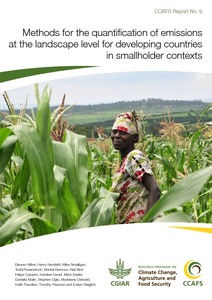Resource information
The GHG (greenhouse gas) mitigation potential from the agricultural sector is set to increase in coming decades. Much of the agricultural mitigation potential lies in developing countries where systems are dominated by smallholder farmers. There is therefore an opportunity for smallholders not only to gain environmental benefits from carbon friendly practices, but also to receive much needed financial input, either directly from carbon financing, or from development agencies looking to support carbon friendly activities. However, the problem remains of how to quantify carbon gains from mitigation activities carried out by smallholder farmers.
Landscape-scale quantification enables farmers to pool resources and expertise, which can put participation in carbon markets and access to other funding sources, within their reach. Therefore, funding agencies, governments and NGOs are increasingly recognizing the benefits of taking a landscape approach to GHG quantification.
This paper gives an overview of approaches that have been taken to date for landscape-scale GHG quantification, covering both measurement and modelling and the reliance of one upon the other. The discussion covers ground-based measurement approaches for carbon stock changes in biomass and soils, methods for measuring GHG flux and the application of remote sensing techniques. Computational approaches for estimating carbon stock changes and GHG emissions are discussed, in addition to the use of more complex dynamic ecosystem models.
This is followed by an analysis of some of the resources that are available for those wishing to do GHG quantification at the landscape scale in areas dominated by smallholders. This analysis is intended to provide an aid to funding agencies, government agencies, NGOs, academics and others. Information for this section comes from questionnaires distributed to selected resource developers.


